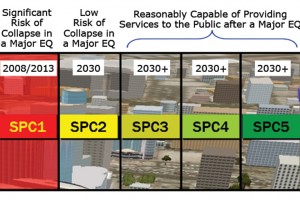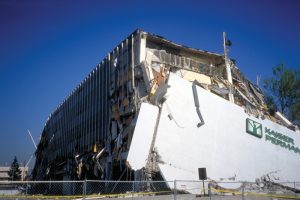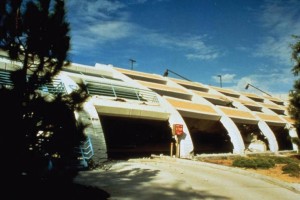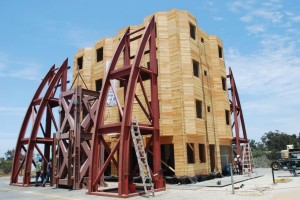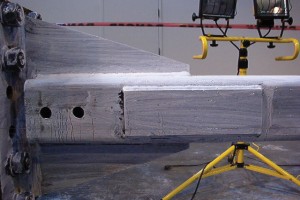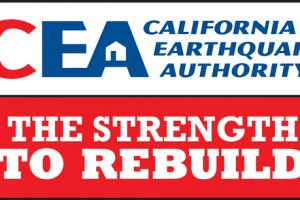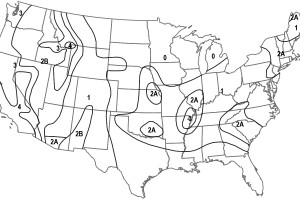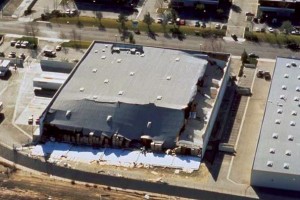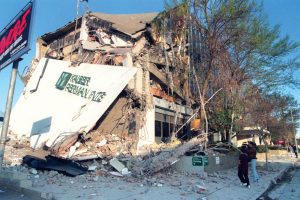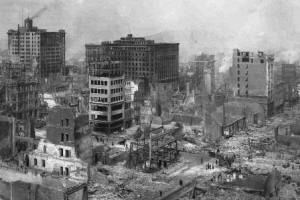The performance of existing buildings in earthquakes provides many lessons. Most of them – building system specific – have been very eloquently articulated in the preceding articles published in STRUCTURE (Northridge – 25 Years Later series). However, as the discussion about creating resilient communities continues, other lessons learned are factors to consider before drafting policies intended to reduce the risks associated with Natural Hazard Events (NHE). …
Review Category : Northridge – 25 Years Later
The Northridge earthquake struck the greater Los Angeles area during the early morning hours of January 17, 1994. The earthquake was responsible for approximately 60 deaths, more than 9,000 injuries, and an estimated $20 billion in damages. Significant ground shaking occurred over a wide area and exceeded design code values in many locations. Numerically, most of the damage was to wood-frame residences, but upwards of 200 concrete buildings were red-tagged. The Northridge earthquake was the first big test of pre-1980 concrete buildings and post-1980 buildings designed using updated code provisions following the 1971 San Fernando earthquake. …
Performance and Resulting Building Code Changes
One of the most iconic images of the 1994 Northridge Earthquake is the photograph of a collapsed precast concrete parking structure at California State University, Northridge. While it was only one of many precast parking structures that suffered extensive damage as a result of the earthquake, it illustrates the juxtaposition of the incredible ductility exhibited by the perimeter columns with the collapse of the overall structure. It epitomizes one of the primary performance issues highlighted by the earthquake. The failure of numerous concrete parking structures during the earthquake, both precast and cast-in-place, led to an in-depth examination of the current design practices and ultimately led to several building code changes to improve the performance of these types of structures. …
An Innovative Approach to Retrofitting Soft/Weak-Story Buildings
Engineers recognize that multi-unit, wood-framed apartment buildings with soft/weak stories are vulnerable to side-sway collapse from earthquakes. The risk was illustrated by the 6.7-magnitude 1994 Northridge quake and the 6.9-magnitude 1989 Loma Prieta quake (Figure 1). In the Northridge quake, for example, roughly 200 such buildings, containing thousands of units, suffered severe damage or collapse. …
The Northridge earthquake exposed the need for a more considered approach to seismic design. In the case of braced frames, this led to a closer examination of the behavior of the system and its components at large drifts. Engineers changed their approach to analysis, proportioning, and detailing of braced frames to avoid connection failure and other unfavorable behaviors they had observed. Simultaneously, lessons learned in the research on steel moment resisting frames, such as examination of expected material strength, were applied to the design of braced frames. The post-Northridge era also saw the introduction of the buckling-restrained brace as a useful tool in seismic design. …
Providing Residential Earthquake Insurance and Mitigation Programs to the State of California
The 1984 California Mandatory Offer Law required insurers to offer earthquake insurance as a condition of participating in the California residential insurance market. After suffering unprecedented insured losses from the 1994 Northridge earthquake, almost all California residential insurers stopped selling homeowner’s insurance throughout the state. California’s legislature stepped in with a solution in 1996 by creating the California Earthquake Authority (CEA), a “public instrumentality” of the state. Through its participating insurers, the CEA provides more than 66% of the residential earthquake insurance market in California. However, nearly 90% of California homeowners do not have earthquake insurance. With a strategic plan to Educate, Mitigate, and Insure Californians, the CEA endeavors to change that. …
The 1994 Northridge earthquake generated world-record ground motions. At the time, the horizontal peak ground acceleration of 1.8 g measured by a seismometer in Tarzana was the largest ever. The same is true of the peak ground velocity of 148 cm/s measured in Granada Hills. Both measurements were within approximately 15 km of the source of the earthquake; they were also near most of the damage described in other articles of this series. …
A Trial and Error Process
Concrete tilt-up buildings are a common subset of a class of building referred to as rigid-wall-flexible-diaphragm (RWFD) structures. Common diaphragm types are plywood, oriented strand board, or metal deck. Masonry wall buildings with flexible diaphragms are also examples of RWFD buildings. Tilt-ups have performed poorly in past earthquakes, with the primary weakness being the anchorage between walls and roof. …
Lessons Learned from a Building Code Option
Performance-Based Earthquake Design (PBD) has become a standardized process in Structural and Earthquake Engineering with the publication of the American Society of Civil Engineers Standard ASCE 41-13, Seismic Evaluation and Retrofit of Existing Buildings (ASCE 41). It represents a shift from the prescriptive code provisions of the past that are silent about what they achieve, to a design tool that meets the varying needs of the public by targeting specific performance objectives. …
The Earthquake-Resisting System that Surprised the Profession
This is one of a series describing surprising lessons engineers have learned from earthquakes and, in particular, the January 17, 1994, Northridge earthquake. Engineers have been learning from earthquakes for more than 100 years by observing the patterns of damage earthquakes have caused in the built environment. Sometimes, things only partly true were part of the lesson, discovering the mistake only after a later earthquake causes unexpected damage. Such was indeed the case with steel moment frame structures and the 1994 Northridge earthquake. …

